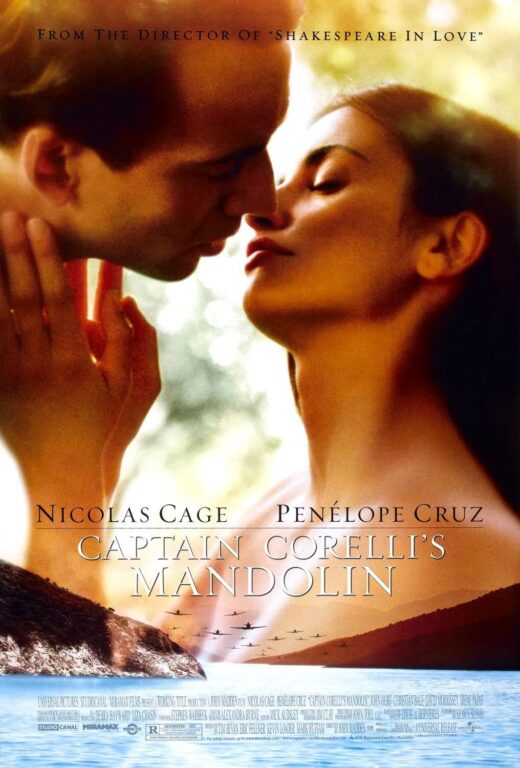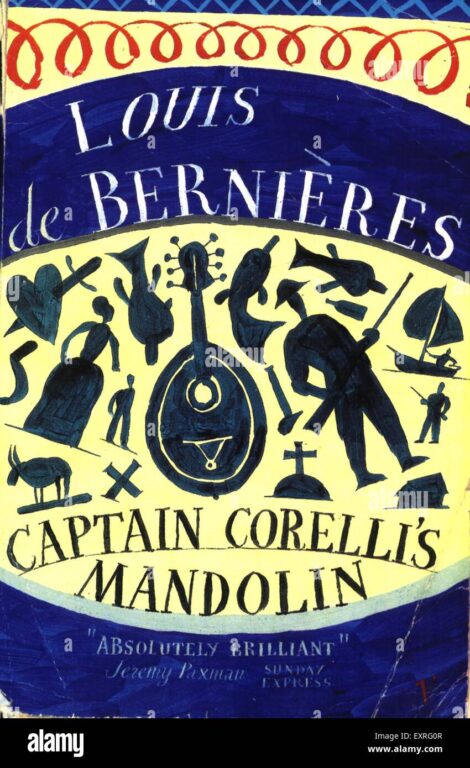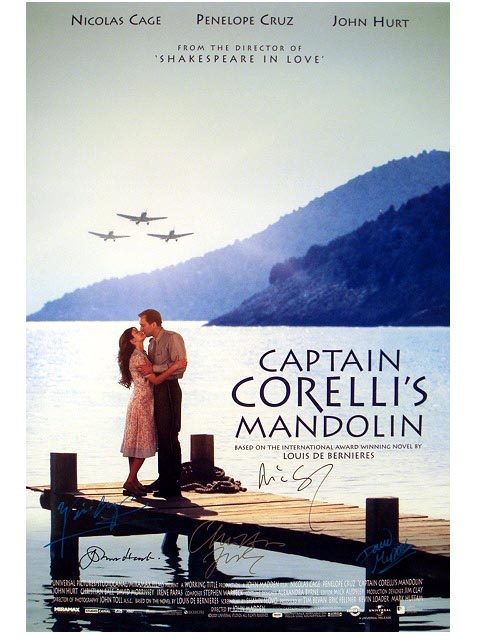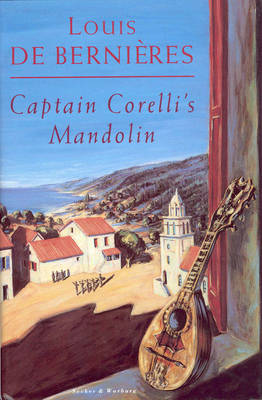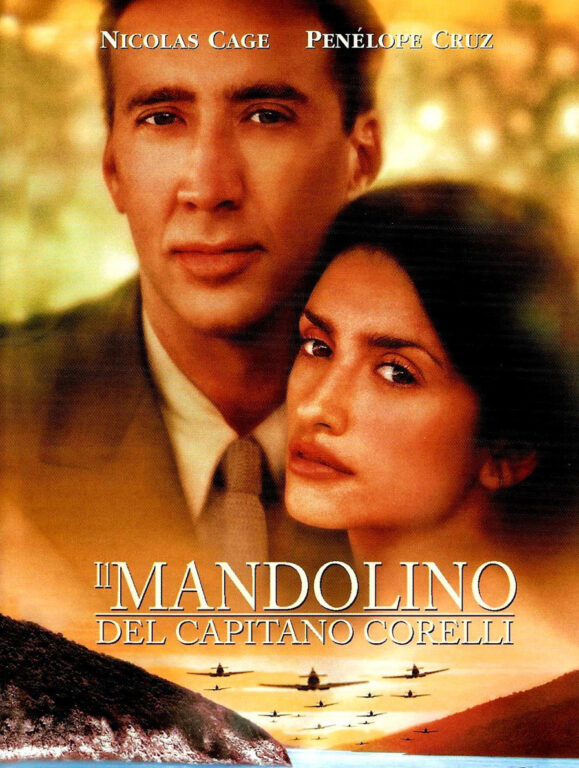Few films have left lasting imprints on both audiences and filming locations, such as Captain Corelli’s Mandolin. It is not only a moving wartime romance but also a vibrant showcase of the enchanting island of Kefalonia. Set against the backdrop of World War II, the film captures the island’s rugged coastlines, crystalline waters, and quaint villages, making Kefalonia feel like a character in its own right. Local actors and crew added authenticity, bringing cultural richness to the narrative and showcasing the island’s everyday life.
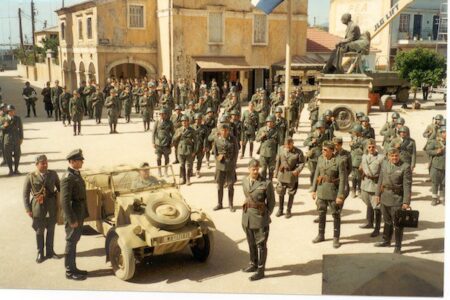
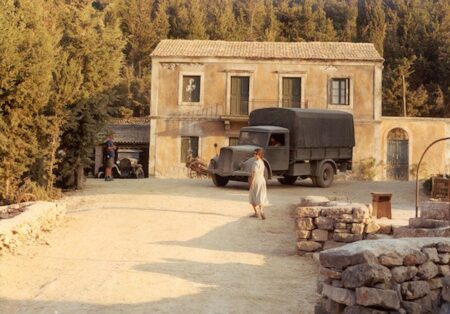
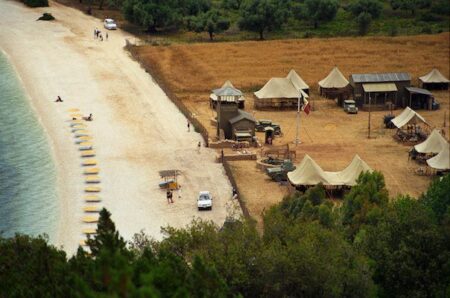
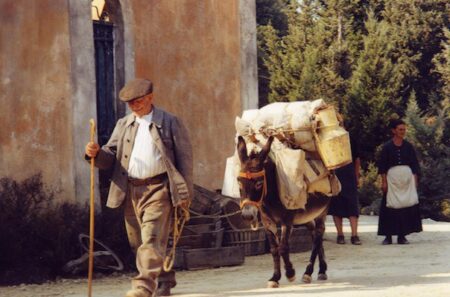
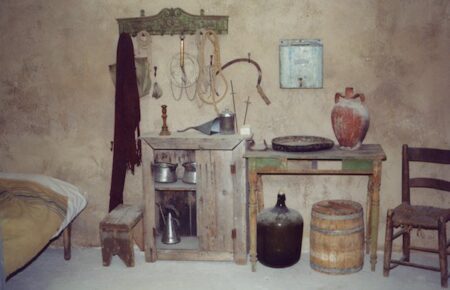
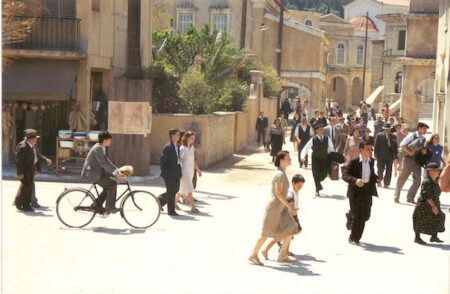
A Brief Overview
Set in 1942, this romantic drama unfolds during the joint Italian-German occupation. A squad of Italian soldiers arrives in Kefalonia to reinforce the small Nazi presence on the island. The soldiers’ carefree Mediterranean temperament quickly eases the initial discomfort of the locals, and a passionate romance develops between the music-loving Italian captain (Nicolas Cage) and the fiancée of a fisherman and local doctor’s daughter Pelagia (Penélope Cruz). However, the clouds of war will inevitably reach the island, threatening the peace of both the residents and their unsuspecting invaders.
Captain Corelli’s Mandolin is a 2001 film directed by John Madden, based on the novel by Louis de Bernières. It stars Nicolas Cage as Captain Corelli, an Italian officer, and Penélope Cruz as Pelagia, a local Greek woman. The film was shot on location in Kefalonia, primarily in the Sami area, enhancing its authenticity. Kefalonia’s natural beauty not only provided a genuine backdrop but also boosted local tourism after the film’s release. The involvement of local extras and crew further enhanced the film’s portrayal of wartime island life.
Horgota Beach, located in northern Kefalonia near the Komitata of Erissos, served as the location for the opening scene, where Pelagia (Penélope Cruz) appears with the beach in the background.
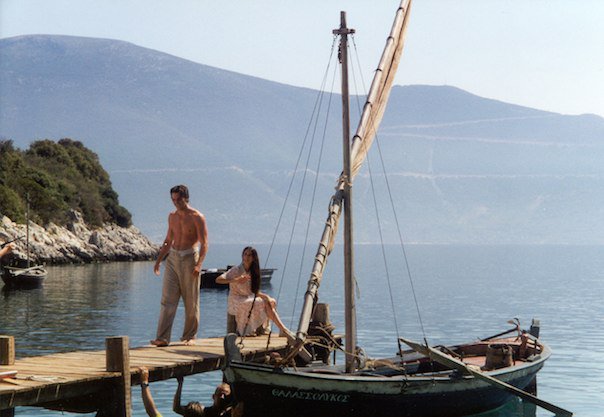
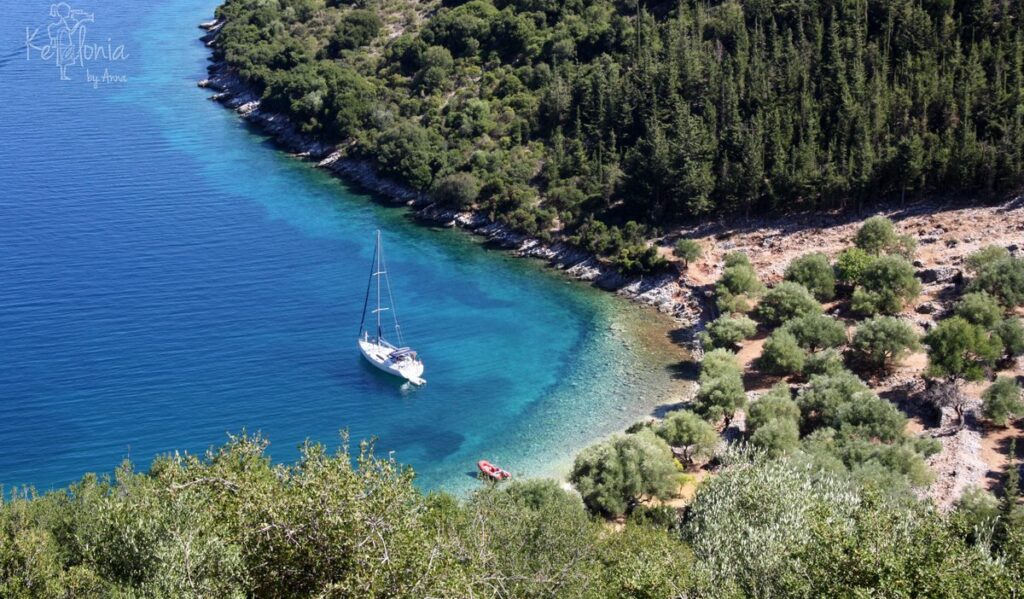
While Captain Corelli’s Mandolin received mixed reviews, it remains notable for its historical setting and the chemistry between its lead actors. The movie, with a runtime of 133 minutes, was produced by Stephen Woolley and distributed by Universal Pictures.
A new stage adaptation by Rona Munro and directed by Melly Still, following a tour around the UK, the production transferred to London’s West End at the Harold Pinter Theatre in the summer of 2019, starring Alex Mugnaioni as Captain Antonio Corelli and Madison Clare as Pelagia. I coordinated the extensive research on the period, which was ordered by the producers and the director of the play and conducted here in Kefalonia. The research included interviews, photographic material, visits to historical sites, and more. For further details, you can read here.
The Real Captain Corelli
Italian Captain Antonio Corelli is said to be based on the story of a real person, and his wartime romance with a Kefalonian woman is based on true events.
One version suggests that the story was influenced by the romance of Pelagia (Maria Dionysiou), who saved Amos Pambaloni, an Italian artillerist, who survived execution from the German massacre in 1943—though he never played the mandolin.
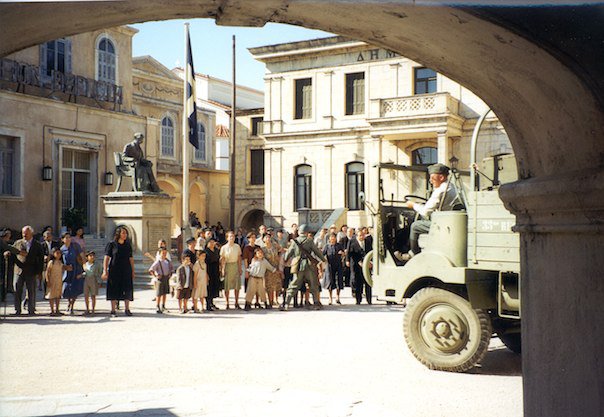
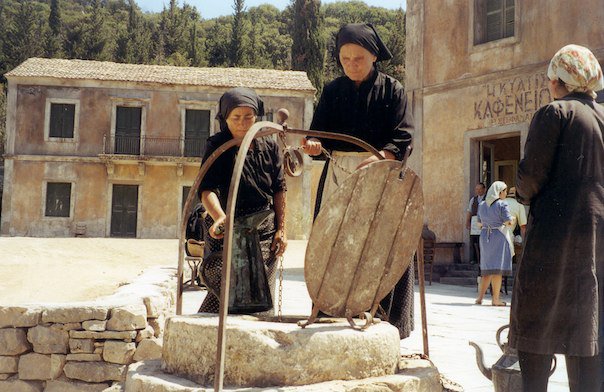
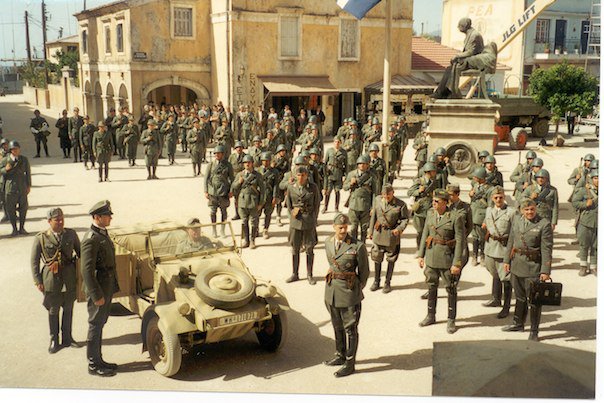
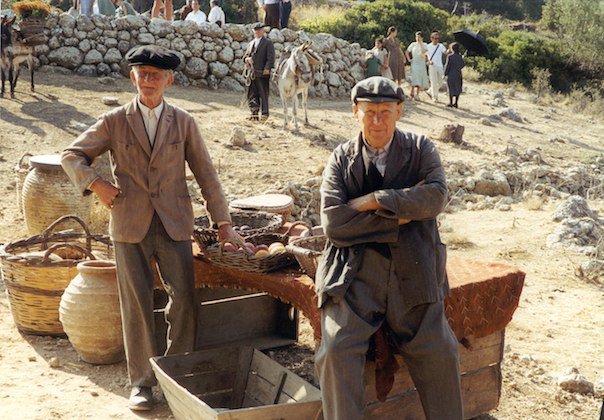
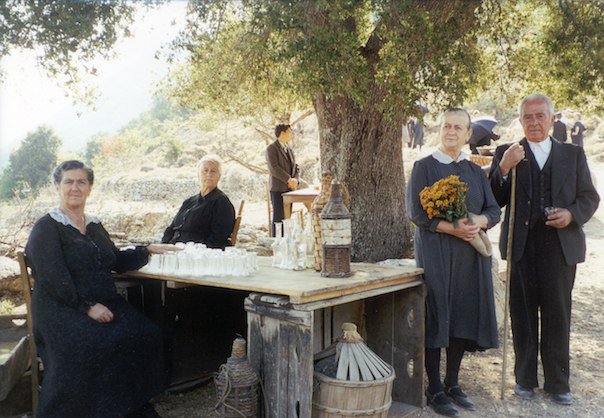
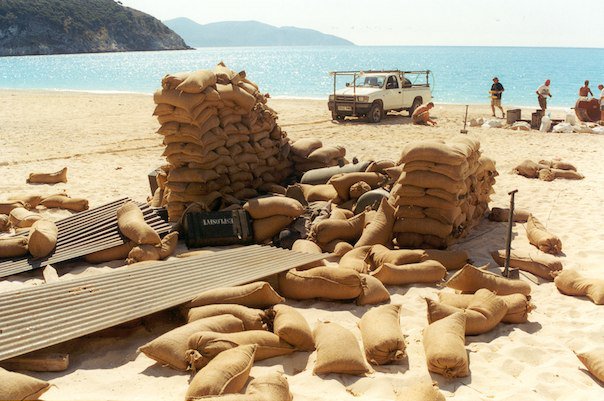
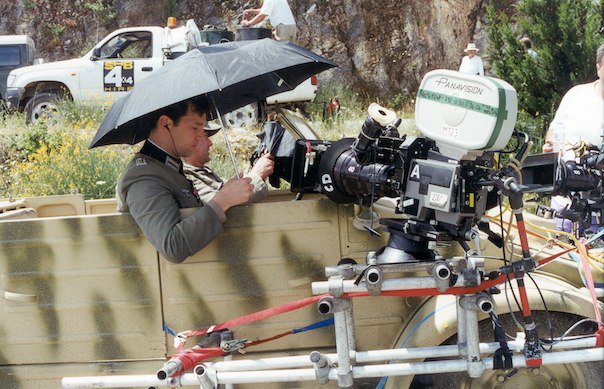
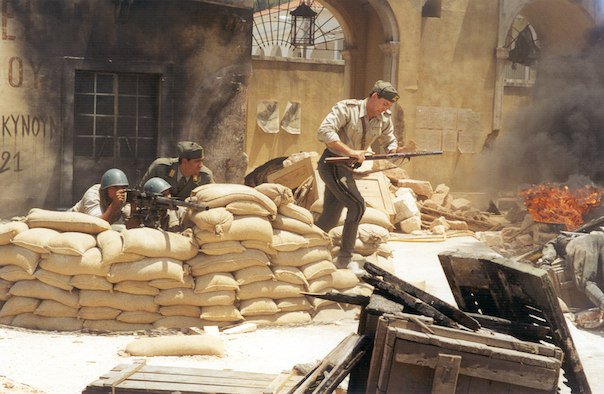
Amos shared his story with journalist Riccardo Moni:
“I arrived in Kefalonia in April 1943, shortly after my 30th birthday. The residents welcomed us warmly, and most understood Italian. I soon became close to a young woman named Maria, who was studying to be a teacher. We never had a romantic relationship as described in de Bernières’ novel, nor did I stay at her house.
On September 12th, the Germans attacked and took Lixouri. A few days later, I received orders to move my artillery unit to Dilinata. On the 21st, while looking through binoculars, I saw a soldier approaching, shouting: ‘Captain, the Germans!’ We tried to resist, but they responded with small mortars, causing casualties. I didn’t realize they had already executed prisoners. I surrendered, only to learn the attackers were Austrians from the Edelweiss division. They took our belongings and shot me in the neck. I didn’t feel pain; it felt like a strong push. After a few minutes, they left, and I was still alive, though injured.
That night, I reached Faraklata and was sheltered by an elderly couple. The next day, I met Maria, who agreed to help me escape. After more close calls, I survived and later fought with the EAM partisans in Epirus.”
General Pambaloni, at the age of 90, visited Kefalonia twice: first with Italian officials to honor those who died in 1943, and later, invited by English-Italian television networks and NET, to participate in a live documentary about his life.
In an alternate version of the story, the romance was influenced by the love story of Italian telegraphist Walter Gorno, who met Greek student Elli Foka and invited her to learn to dance to the rhythms he played on his accordion. The young couple quickly fell in love, and despite the challenges posed by the war, they remained together and in 1944, they welcomed their child. Their daughter, Yolanda Gorno, shared their touching love story with “The Machine of Time,” a story thought to have even inspired Hollywood creators.
The novel also shows some similarities to Bandiera Bianca a Cefalonia, a novel by Marcello Venturi published in 1963, and translated into English as The White Flag (1969).
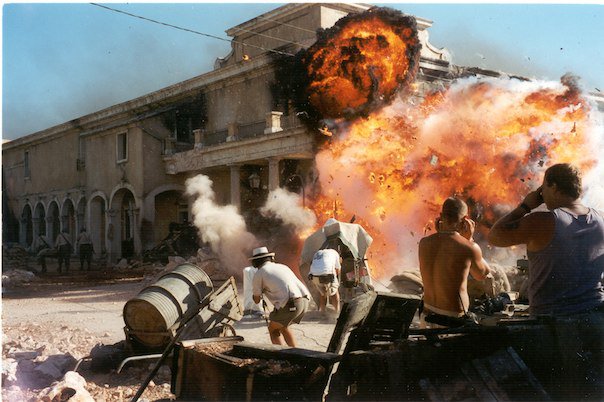
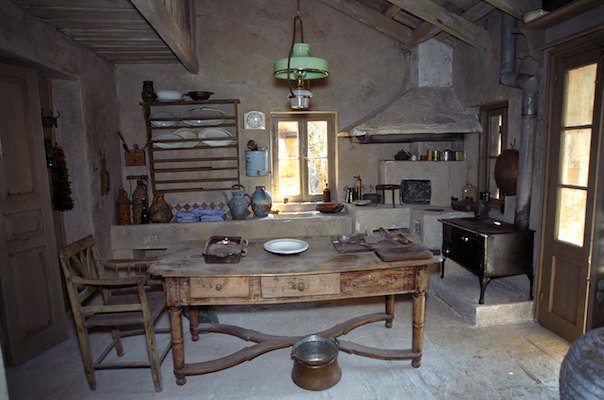
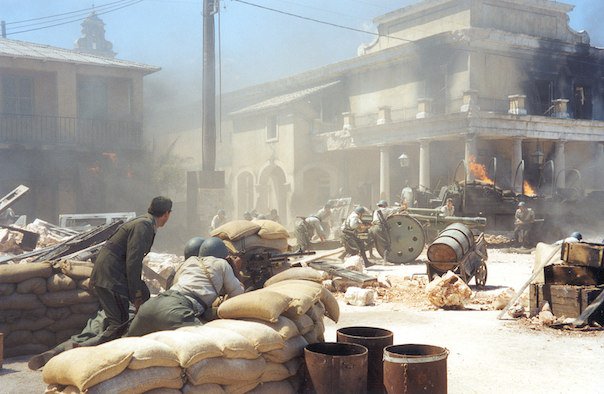
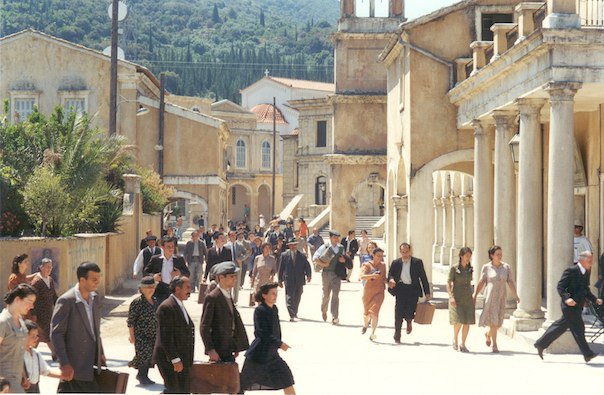
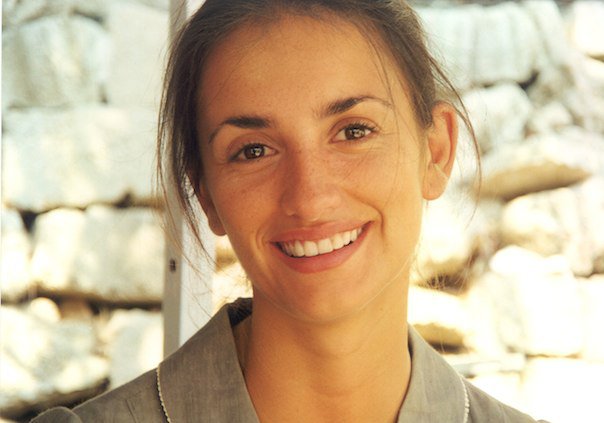
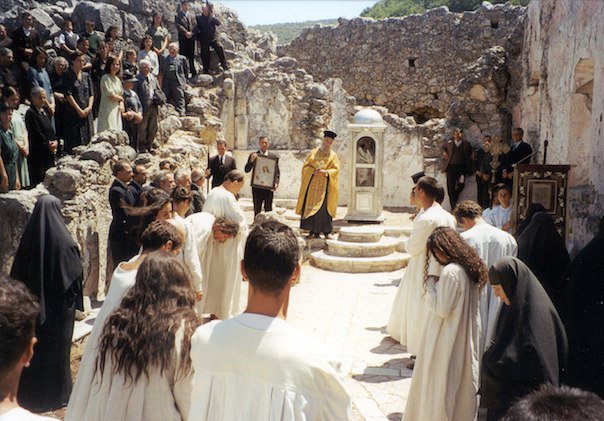

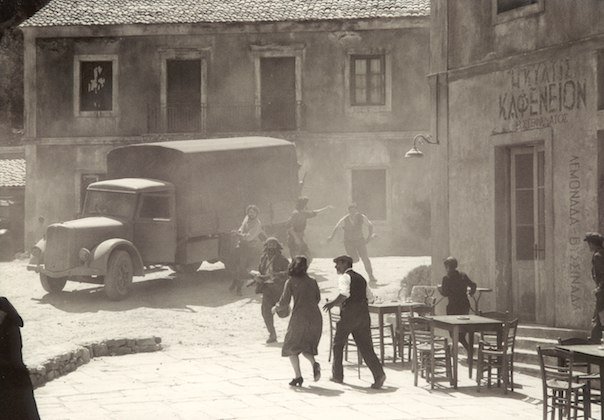
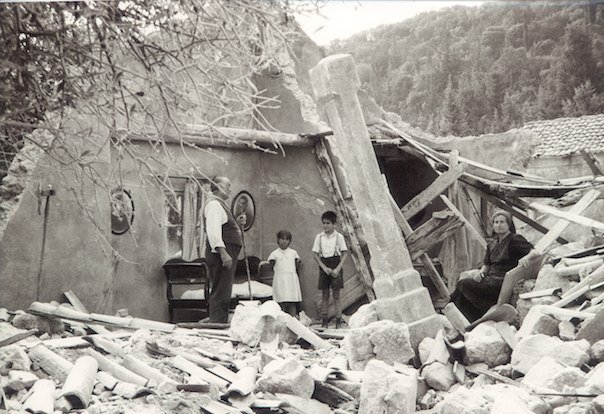
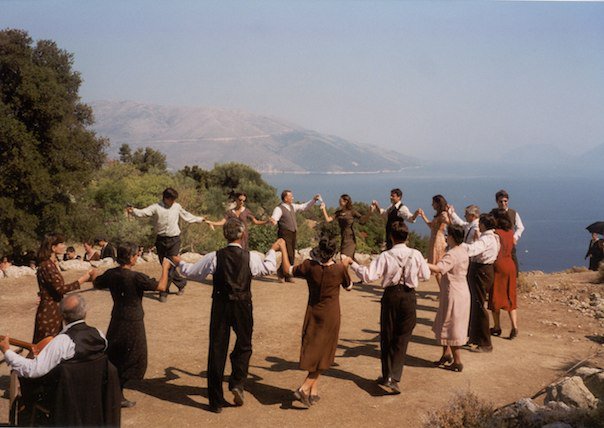
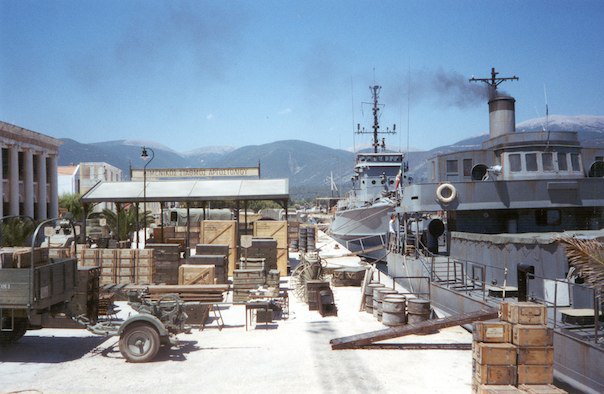
Reactions to the book and the film
The Greek reaction to Captain Corelli’s Mandolin has been mixed, with significant criticism, especially regarding its historical accuracy and portrayal of Greeks. Writers and Historians, including Lefteris Eleftheratos, a writer from Lixouri, publicly criticized Louis de Bernières’ Captain Corelli’s Mandolin for distorting history and misrepresenting the local characters. The publisher, Psychogios, defended the book, claiming it allowed for “literary freedom.” Eleftheratos countered, revealing that the Greek translation softened the original text, with omissions made to avoid stronger reactions. He further denounced the distortion in an open letter to Bernières. Additionally, Amos Pambaloni condemned the book, calling it a “racist stain on the Greek Resistance.” He criticized the portrayal of Greeks as barbarians and defended the honor of the Resistance fighters, emphasizing the injustice of such depictions.
All photos are from Panagis Kavalieratos’ archive, and we thank him greatly for allowing us to use them.
